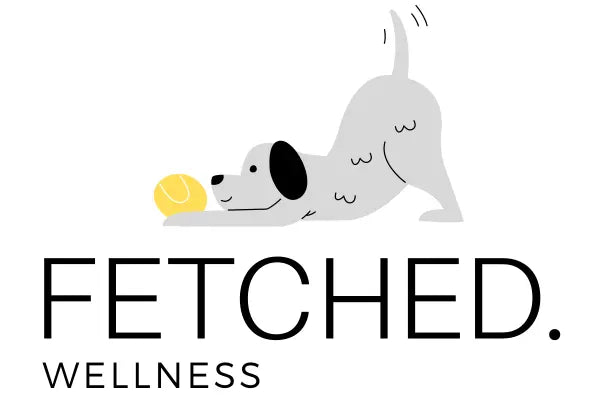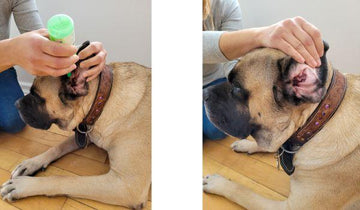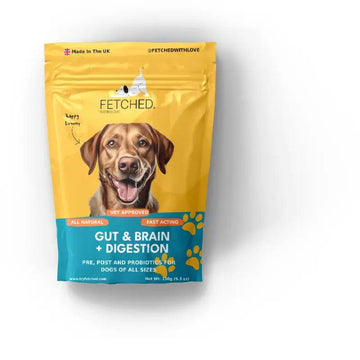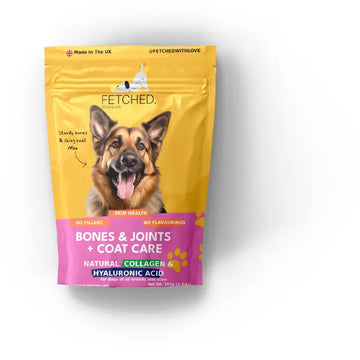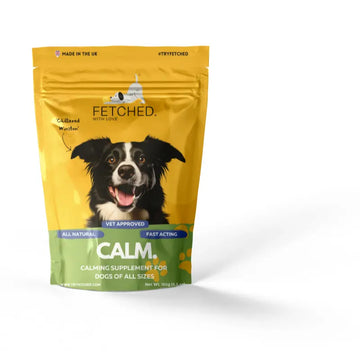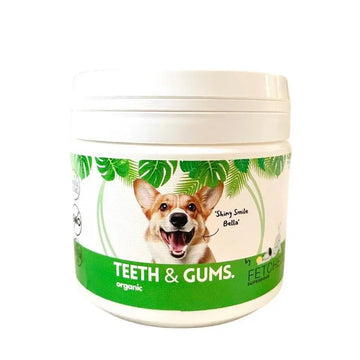As dog parents, our pup's health is paramount. Among the various aspects of canine health, dental cleaning and ear hygiene often gets overlooked. Yet, it's an area where dogs can be most vulnerable to health problems and infections.
Let's take a look at why that is and offer you a step by step guide for ensuring your dog's ears are clean and shiny!
The Anatomy of a Dog's Ear
Surprisingly, a dog's ear is actually more complex than ours. Unlike human ears, a dog's ear canal is L-shaped. This makes it more prone to accumulating debris, moisture and various sediments.
This moist environment can breed bacteria and yeast, leading to ear infections.
Regular ear cleaning can help prevent this build-up and maintain your pet's ear health.
What are the Signs of Ear Problems in Dogs?
The signs and symptoms can be similar to us humans and include everything from discharge to foul smell and even loss of balance.
| Signs and Symptoms |
|---|
| Persistent scratching of the ear or area around the ear |
| Brown, yellow, or bloody discharge |
| Odor in the ear |
| Redness or swelling of the ear canal |
| Unusual eye movements |
| Loss of balance |
If your dog has any of the above, you could try cleaning their ears in the first instance, or even contact your vet who can rule out more serious causes.
How do I clean My Dog's Ears?
Here are the steps we would recommend to ensure cleaning your dog's ear. is safe for both of you and not too uncomfortable for your pet:
- Ensure your dog is well secure, and that he is calm and comfortable. It's advisable for there to be two of you, one to do the cleaning and the other to help hold the dog. You may wish to try some calming supplements or play some relaxing music before and during the procedure to help your dog calm down as well.
- Observe and examine the ear: This is quite important to make sure you are not missing any abscesses, infection or foreign bodies in the ear. If you notice anything unusual, it's best to consult a vet before proceeding.
- Use the ear cleaner: Gently hold the ear flap upright and fill the ear canal with a vet-approved cleaner. Do not insert any objects into the ear canal.
- Massage the Base of the Ear: After applying the cleaner, gently massage the base of your dog's ear for about 20-30 seconds. You should hear a squishing sound, which means the cleaner is being dispersed.
- Allow your dog to shake it off: After massaging, let your dog shake his head. This will actually help with the cleaning process as it can bring up the debris from deeper down the ear, so it can be expelled.
- Wipe the Ear: Using a cotton ball or gauze, gently wipe the inner part of the ear flap and the upper ear canal. Never use a Q-tip or other cotton tip applicators as they can push debris further into the ear or damage the ear drum (same advice as in humans really!)
- Repeat the same process for the other ear
- Reward your dog so he can associate ear cleaning with a positive experience and he behaves even better next time!
- If you think your dog is in any pain during this procedure, stop and get in touch with your vet as there may be an underlying issue such as an infection that will require medication for it to go away.
Here's a good video illustrating this whole process:
Do I need to use an ear cleaner?
Yes, we advise that you use a good quality, vet approved ear cleaner solution.
Try to avoid those solutions with hydrogen peroxide or ethanol because they can cause irritation inside the ear canal. It can also be painful and uncomfortable for your dog if there is any redness or ulceration to the inside of the ear canal.
If you can, choose an ear cleaner with antibacterial and antifungal properties as these can coat the surface of the ear canal and help prevent infections.
When should I see a vet?

While regular ear cleaning is a good preventive measure, it's not a solution to all ear problems. Regular ear cleaning solutions will not solve infections that have already spread inside the ear canal.
If your dog shows persistent symptoms like shaking his head, redness, swelling, bad odor, or seems to be in pain, it's time to visit the vet.
Your vet can then perform a thorough examination and prescribe antibiotic or antifungal ear drops.
4 Tips for Maintaining Good Ear Health
Other than cleaning your dog's ears regularly, here are other things you can do:
- Keep the ears dry: Drying your dog's ears with a towel can help prevent water from pooling in. This is important after bathing or swimming in a lake or open water. Keeping the ears dry can play a role in preventing bacterial or fungal infections
- Diet: A good diet rich in protein and vitamins will help boost your dog's immune system. Probiotics in dog food will also boost the gut health, which is closely related to a dog's immune system. It's usually the case that the better the gut health, the healthier the dog!
- Grooming: Regular grooming in dogs with long hair can help prevent the accumulation of dirt inside the ear canal.
- Regular vet health checks: Regular check ups means your vet can spot any health problems early on and begin the treatment in the early stages.
Conclusion
Regular ear cleaning in your dog is as important as teeth cleaning, and an essential part of their overall well-being.
When done properly it can prevent many common ear issues and can even detect infections or ear problems early on. If you observe any persistent symptoms, don't hesitate to seek professional help.
References
1. Cole LK, Kwochka KW, Kowalski JJ, Hillier A, Hoshaw-Woodard SL. Evaluation of an ear cleanser for the treatment of infectious otitis externa in dogs. Vet Ther. 2003 Spring;4(1):12-23. Erratum in: Vet Ther. 2003 Summer;4(2):108. PMID: 12756632.
2. Mueller RS, Baumann KN, Boehm T, Dörfelt S, Kasper B, Udraite-Vovk L. Evaluation of hypochlorous acid as an ear flush in dogs with chronic otitis externa. Vet Dermatol. 2023 Apr;34(2):134-141. doi: 10.1111/vde.13142. Epub 2022 Dec 14. PMID: 36517454.
